
Case #363 - January 2014
A 49-year-old female passed a worm-like object approximately three weeks after attending a Thanksgiving potluck for 200 people. Prior to the Thanksgiving meal, the patient had experienced diarrhea for two weeks. The worm was presented to a local hospital. Follow-up stool ova-and-parasite (O&P) examinations were negative. The Microbiology Department took digital images (Figures A-C) of the worm and sent them to the DPDx Team for diagnostic assistance. The initial finding from the images was reported simply as ‘cestode’ and the specimen was forwarded to the DPDx Team for further study. Upon arrival, the specimen was placed in lactophenol for clearing. Figures D and E show what was observed in the proglottids after clearing for two days. The objects measured 60 micrometers in length on average. What is your diagnosis? Based on what criteria?
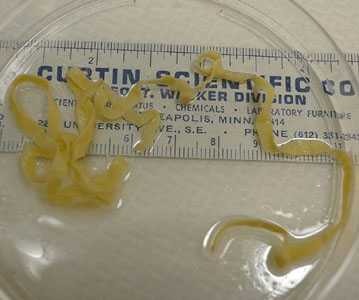
Figure A
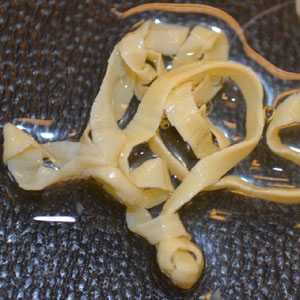
Figure B
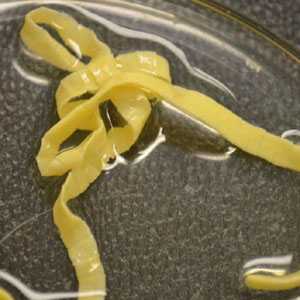
Figure C
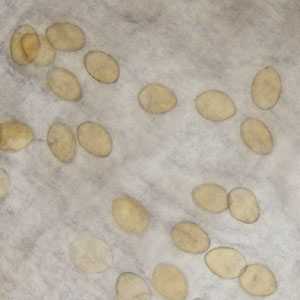
Figure D
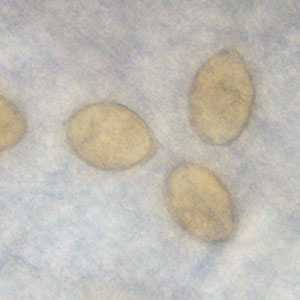
Figure E
Case Answer
This was a case of diphyllobothriasis caused by a cestode in the genus Diphyllobothrium. The cleared proglottids showed pseudophyllidean-type eggs within the size range for Diphyllobothrium spp. While the operculum and abopercular knob were not clearly visible in the eggs in the images, Diphyllobothrium is the only pseudophyllidean cestode to reach sexual maturity in humans. A related genus, Spirometra, infects humans in its larval stage and causes the disease known as sparganosis.
More on: Diphyllobothriasis
This case and images (in part) were kindly provided by the Evanston Hospital Microbiology Department, Evanston, IL.
Images presented in the monthly case studies are from specimens submitted for diagnosis or archiving. On rare occasions, clinical histories given may be partly fictitious.
DPDx is an education resource designed for health professionals and laboratory scientists. For an overview including prevention and control visit www.cdc.gov/parasites/.
- Page last reviewed: August 24, 2016
- Page last updated: August 24, 2016
- Content source:
- Global Health – Division of Parasitic Diseases and Malaria
- Notice: Linking to a non-federal site does not constitute an endorsement by HHS, CDC or any of its employees of the sponsors or the information and products presented on the site.
- Maintained By:


 ShareCompartir
ShareCompartir